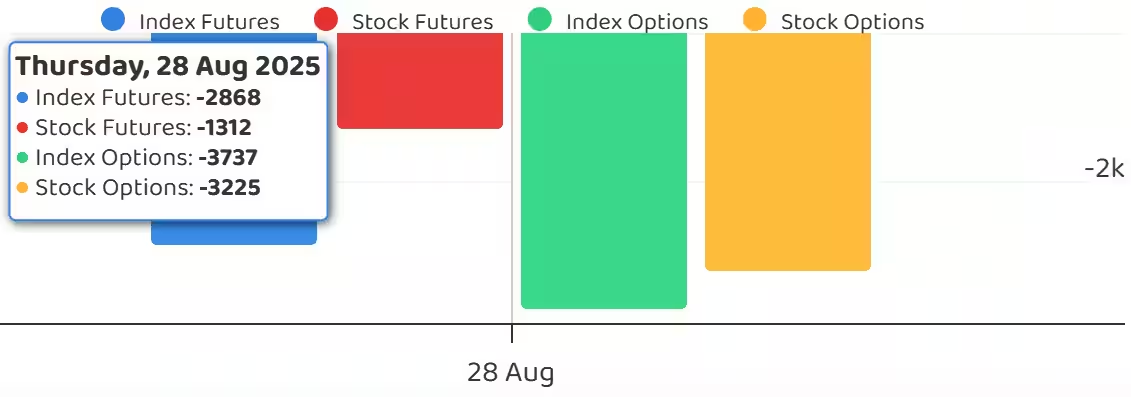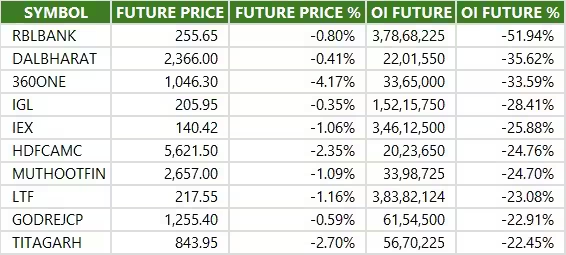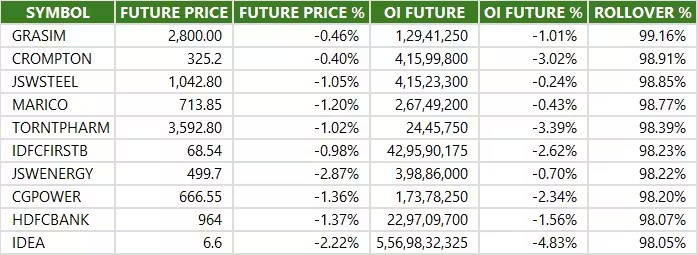29 Aug , 2025 By : Debdeep Gupta

The selling pressure mounted for the second straight session, dragging the Nifty 50 below the 100-day EMA (24,630) with a nearly 1 percent loss on the monthly derivative contracts expiry on August 28. The sentiment turned more bearish with continued weakness in momentum indicators. Hence, if the correction widens further, 24,400 (upward-sloping trendline support) and 24,340 (August low) are the levels to watch. However, in case the index rebounds, the 100-day EMA, and 24,700 level (which coincides with the midline of the Bollinger Bands and Thursday’s high) could act as possible resistances, according to experts.
Here are 15 data points we have collated to help you spot profitable trades:
1) Key Levels For The Nifty 50 (24,501)
Resistance based on pivot points: 24,646, 24,698, and 24,783
Support based on pivot points: 24,477, 24,425, and 24,341
Special Formation: The Nifty 50 formed another long bearish candle on the daily timeframe, with a continuing lower highs–lower lows structure and above-average volumes, signaling a negative trend. With Thursday’s fall, the index is now trading below the 20-, 50-, and 100-day EMAs, while the RSI at 40.79 has triggered a bearish crossover, indicating weakening momentum. Additionally, the MACD is on the verge of a negative crossover, and positive momentum in the histogram has faded further. This indicates a strong bearish setup in the short term, increasing the likelihood of further downside unless a sharp reversal occurs.
2) Key Levels For The Bank Nifty (53,820)
Resistance based on pivot points: 54,225, 54,370, and 54,604
Support based on pivot points: 53,756, 53,611, and 53,377
Resistance based on Fibonacci retracement: 54,682, 55,250
Support based on Fibonacci retracement: 53,423, 52,423
Special Formation: The Bank Nifty continued to underperform compared to the benchmark Nifty 50, falling 1.16 percent and forming a long bearish candle on the daily timeframe, again with above-average volumes. The index is now trading below the lower line of the Bollinger Bands, and is approximately 250 points away from its 200-day EMA, and 400 points away from the 50% Fibonacci retracement level (from the April low to the July high). Furthermore, the 10-, 20-, and 50-day EMAs are trending downward. The RSI at 28.58 has now entered the oversold zone, while the MACD retains its bearish crossover, and the histogram continues to weaken. This indicates continued bearish momentum, and unless a reversal is triggered, further downside could follow.
3) Nifty Call Options Data
According to the weekly options data, the 25,000 strike holds the maximum Call open interest (with 96.04 lakh contracts). This level can act as a key resistance for the Nifty in the short term. It was followed by the 24,800 strike (77.44 lakh contracts), and the 25,100 strike (56.23 lakh contracts).
Maximum Call writing was observed at the 25,000 strike, which saw an addition of 55.75 lakh contracts, followed by the 24,800 and 24,600 strikes, which added 50.27 lakh and 40.9 lakh contracts, respectively. There was hardly any Call unwinding seen in the 23,650-25,300 strike band.
4) Nifty Put Options Data
On the Put side, the maximum Put open interest was seen at the 24,000 strike (with 59.03 lakh contracts), which can act as a key support level for the Nifty. It was followed by the 24,500 strike (48.91 lakh contracts) and the 24,200 strike (38.64 lakh contracts).
The maximum Put writing was placed at the 24,000 strike, which saw an addition of 35.73 lakh contracts, followed by the 24,500 and 24,300 strikes, which added 32.34 lakh and 24.89 lakh contracts, respectively. The maximum Put unwinding was seen at the 24,800 strike, which shed 5.67 lakh contracts, followed by the 24,850 and 25,000 strikes, which shed 4.64 lakh and 3.89 lakh contracts, respectively.
5) Bank Nifty Call Options Data
According to the monthly options data, the maximum Call open interest was seen at the 55,000 strike, with 7.88 lakh contracts. This can act as a key resistance level for the index in the short term. It was followed by the 54,000 strike (6.82 lakh contracts) and the 55,500 strike (5.99 lakh contracts).
Maximum Call writing was observed at the 54,000 strike (with the addition of 5.59 lakh contracts), followed by the 54,500 strike (3.36 lakh contracts), and the 55,000 strike (3.25 lakh contracts). There was hardly any Call unwinding seen in the 52,000-55,800 strike band.
6) Bank Nifty Put Options Data
On the Put side, the 54,000 strike holds the maximum Put open interest (with 9.77 lakh contracts), which can act as a key level for the index. This was followed by the 53,000 strike (7.13 lakh contracts) and the 55,000 strike (6.81 lakh contracts).
The maximum Put writing was observed at the 54,000 strike (which added 4.41 lakh contracts), followed by the 53,000 strike (2.06 lakh contracts) and the 54,500 strike (1.76 lakh contracts). There was hardly any Put unwinding seen in the 52,000-55,800 strike band.
7) Funds Flow (Rs crore)

8) Put-Call Ratio
The Nifty Put-Call ratio (PCR), which indicates the mood of the market, rose to 0.86 on August 28, compared to 0.72 in the previous session.
The increasing PCR, or being higher than 0.7 or surpassing 1, means traders are selling more Put options than Call options, which generally indicates the firming up of a bullish sentiment in the market. If the ratio falls below 0.7 or moves towards 0.5, then it indicates selling in Calls is higher than selling in Puts, reflecting a bearish mood in the market.
9) India VIX
The India VIX, which measures expected market volatility, declined by 0.12 percent to 12.18 on the daily charts, but continued to stay above its short-term moving averages.
10) Long Build-up (1 Stock)
A long build-up was seen in 1 stock. An increase in open interest (OI) and price indicates a build-up of long positions.

11) Long Unwinding (187 Stocks)
187 stocks saw a decline in open interest (OI) along with a fall in price, indicating long unwinding.

12) Short Build-up (4 Stocks)
4 stocks saw an increase in OI along with a fall in price, indicating a build-up of short positions.

13) Short-Covering (20 Stocks)
20 stocks saw short-covering, meaning a decrease in OI, along with a price increase.

14) High Delivery Trades and High Rollovers
Here are the stocks that saw a high share of delivery trades. A high share of delivery reflects investing (as opposed to trading) interest in a stock.

Here are the stocks which saw the highest rollovers on expiry day.

15) Stocks Under F&O Ban
Securities banned under the F&O segment include companies where derivative contracts cross 95 percent of the market-wide position limit.
Stocks added to F&O ban: Nil
Stocks retained in F&O ban: Nil
Stocks removed from F&O ban: RBL Bank
0 Comment